Creative Biolabs is pleased to offer customized library construction services under a variety of phage display systems. Our scientists have extensive experience in library construction and are professional in generating different types of phage display libraries, including scaffold libraries, peptide libraries, antibody libraries, cDNA libraries and others.
Creative Biolabs can display the interest antibody in either scFv or Fab format to construct a high-quality antibody library. Due to the smaller size, scFv libraries are genetically more stable than Fab libraries, while Fab libraries lack the tendency to form higher molecular weight species, such as dimers and trimers, which can simplify the selection and characterization. Moreover, both human plasma cells and splenocytes from naïve or immune animals can be accepted as repertoire source for our antibody library construction service. In addition, Creative Biolabs is able to generate fully or semi-synthetic antibody libraries as well.
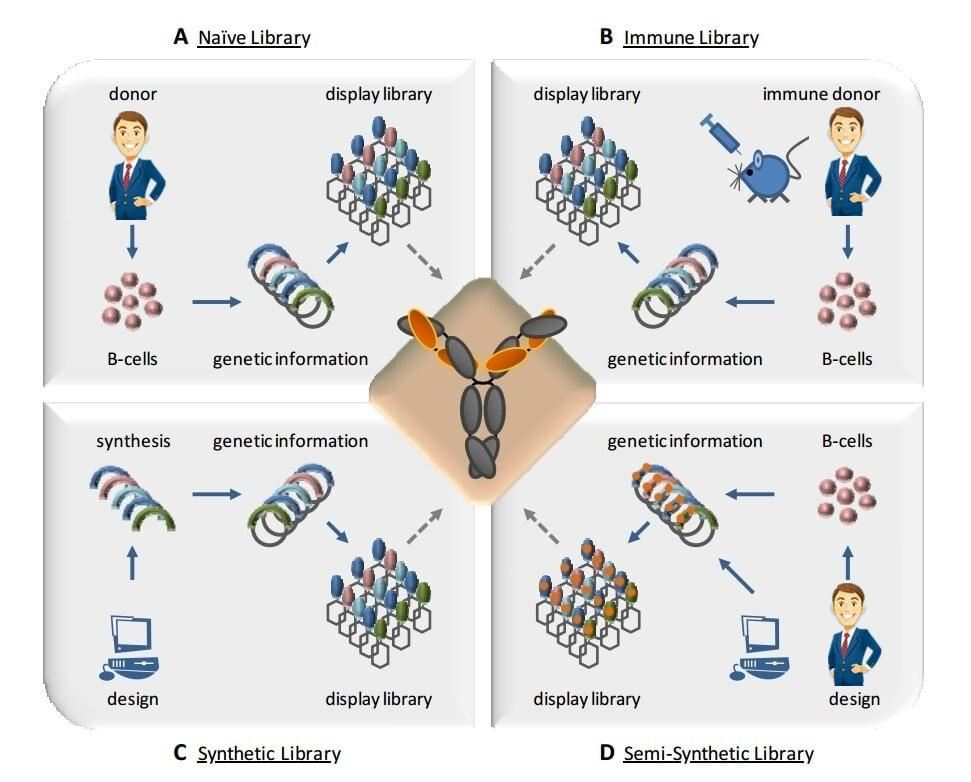
Creative Biolabs is able to generate high-quality phage display libraries for a comprehensive list of scaffolds. Our scientists devote to offer customized service to design specific scaffold based on clients’ demands. In addition, to achieve 100% precise mutant and over 1010 diversity, both trimer codon technology and NNK method are used in the library construction resulting in an increased randomicity, which enables the library to be more suitable for sorting and isolating the high-affinity protein or peptide targets.
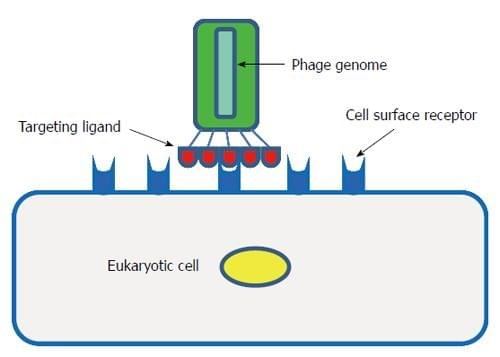
To form a peptide library, Creative Biolabs can generate constrained structures with target-adapted cross-links for both naïve and semi-synthetic peptides. This structure contributes to maintaining or increasing a series of properties of peptides, such as stability, permeability, binding affinity and resistance to protease activity. Furthermore, for peptide libraries with inserts longer than 8-mer (and up to 30-mer), three nucleotide doping strategies (NNK, Split-mix-split synthesis, and Trimer codon) can be adopted to maximize the amino acid sequences encoded by the inserted DNA sequences.
According to our advanced phage display platform, Creative Biolabs is capable of displaying entire cDNA products on the surface of appropriate phage system. Compared with conventional cDNA libraries, our high-quality libraries can achieve higher capacity, density, and correct orientation, which further contribute to the investigation of a lot of protein candidates. Moreover, there are various types of cDNA libraries, including standard library, full-length library, normalized library and subtractive library, can be tailored to match our clients’ demands.
In general, Creative Biolabs employs three main approaches to design semi-synthetic or fully synthetic libraries with appropriate diversity. Our scientists normally generate libraries with a diversity of 108, while we are also able to generate libraries over 1010 or follow our clients’ specific requirements.
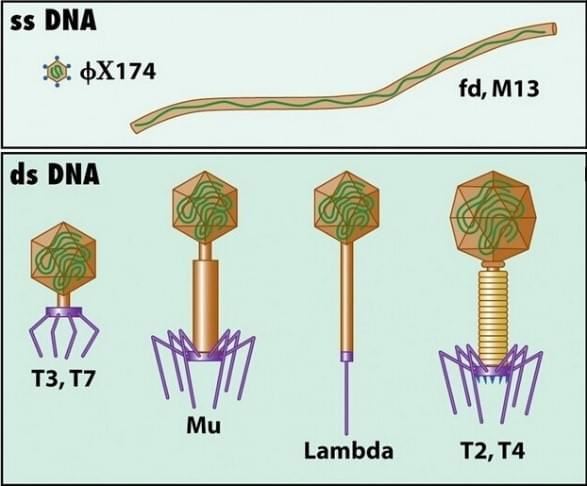
Based on the interest protein and specific project objective, Creative Biolabs is able to tailor the most suitable phage display system (M13, T4 or T7) for the library construction.
Table 1. Different phage display vehicles and their characteristics (Ebrahimizadeh and Rajabibazl 2014)
| M13 | T4 | T7 | |
| Genome Size | 6407 bp | 168895 bp | 39937 bp |
| Display Protein | All coat proteins, usually pIII and pVIII | SOC and HOC | gp10B |
| Display Size |
>110 kDa on pIII <10 kDa on pVIII |
<710 kDa | <132 kDa |
| Display Density |
<5 copies on pIII <2700 copies on pVIII |
<810 copies on SOC <155 copies on HOC |
<415 copies |
| Lifecycle | Non-lytic | Lytic | Lytic |
In addition to regular M13, T7 or T4 phage, λ phage is an ideal vehicle to carry the DNA fragments due to its simple structure and flexible DNA. By employing multiple lambda vectors, Creative Biolabs can offer specific genome library construction service to generate qualified genome library with over 95% coverage from either genomic DNA, chromosomes or microbes. In addition, our professional scientists are also available to generate lambda based cDNA library as an alternative service.
As one of the most famous industry leaders who is skilled in advanced phage display technology, Creative Biolabs not only concentrates on developing cutting-edge technology but also be willing to share our state-of-the-art platforms and sufficient expertise with our clients to promote their brilliant studies. It is our guarantee to provide customers with the best services and finest results at Creative Biolabs.
Reference
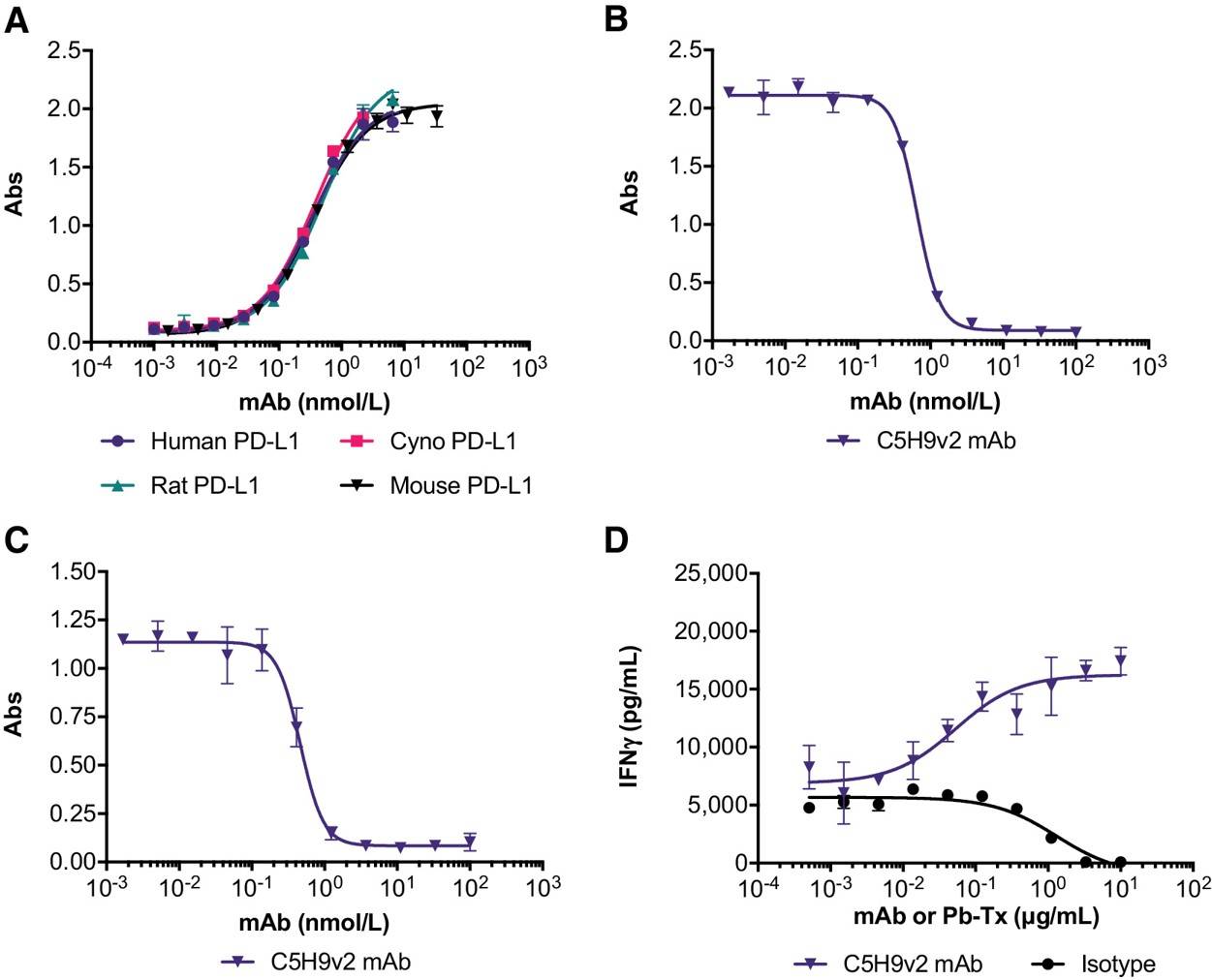 Fig. 1 C5H9v2 monoclonal antibody is a high-affinity blocker of PD-L1 and can potentiate T-cell responses. (Hikmat H. Assi, 2021)
Fig. 1 C5H9v2 monoclonal antibody is a high-affinity blocker of PD-L1 and can potentiate T-cell responses. (Hikmat H. Assi, 2021)
In this article, a PD-L1-blocking antibody was used to develop a novel protease-activatable antibody prodrug, known as Probody therapeutics (Pb-Tx) with the aim of reducing the systemic toxicity of traditional anti-PD-1/PD-L1 therapy while maintaining immune responses to tumors. Probody therapy is able to target antibody activity by attenuating the ability to bind antigen until protease activation in the tumor microenvironment, and its local PD-1/PD-L1 inhibition can elicit robust anti-tumor immunity and minimize systemic immune-mediated toxicity. Through this research, one of the main problems in traditional immunotherapy is solved, which is how to reduce damage to the patient's normal cells, thereby improving the safety and effectiveness of the treatment. While the scientists were conducting their research, Creative Biolabs contributed to the discovery of PD-L1 blocking antibodies. We identified this potent antibody from a fully human single-chain variable fragment (scFv) phage display library using recombinant His-tagged human or mouse PD-L1 extracellular domains.
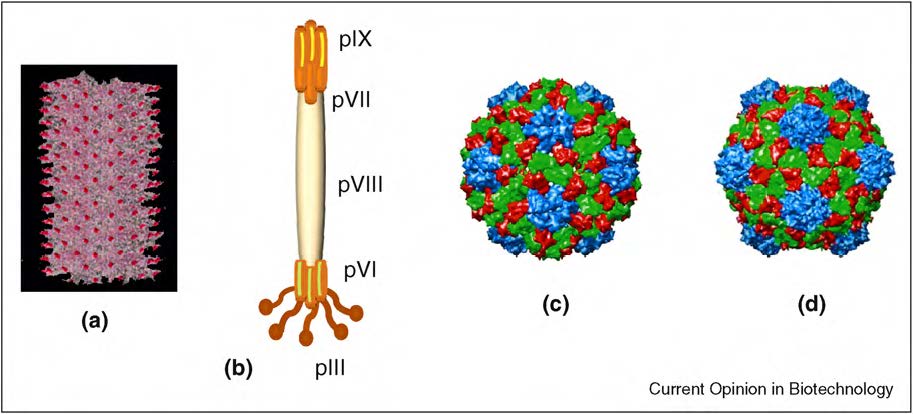 Fig. 2 Viruses used in bionanotechnology. (Carissa M Soto, 2010)
Fig. 2 Viruses used in bionanotechnology. (Carissa M Soto, 2010)
This article describes the progress in the field of biological nanotechnology, in which viruses are used as tools for biological nanotechnology to create nanostructured materials. Scientists use genetic engineering to modify the viral capsid so that it can act as a protein cage, scaffold, and template for assembling nanomaterials. This method allows precise and controlled integration of organic and inorganic molecules for the development of a variety of nanomaterials and for biosensing, memory devices, nanocircuits, light-harvesting systems, and nanobatteries.
Various nanomaterials produced by rod and spherical viruses mainly include tobacco mosaic virus (TMV), M13 bacteriophage, cowpea chlorosis mottle virus (CCMV), and cowpea mosaic virus (CPMV). M13 bacteriophage is a filamentous phage of Escherichia coli and a well-known cloning vector that has been used to express or display engineering peptides on the surface of the virus without affecting its natural biological characteristics. M13 phage has also been used as a phage display to express small peptides and antibodies. This display technique can produce high affinity and specific human antibodies without immunity. In addition, M13 bacteriophage can also be used to produce engineering antibodies with specific specificity and stability, as well as cell signal peptides for the identification of tissue regeneration materials. For such engineering applications, Creative Biolabs has created a combinatorial library to produce a large number of bacteriophages displaying various amino acids. The availability of premade and customized phage libraries from Creative Biolabs makes it possible to make full use of phage display technology in material science.
Use the resources in our library to help you understand your options and make critical decisions for your study.
All listed services and products are For Research Use Only. Do Not use in any diagnostic or therapeutic applications.